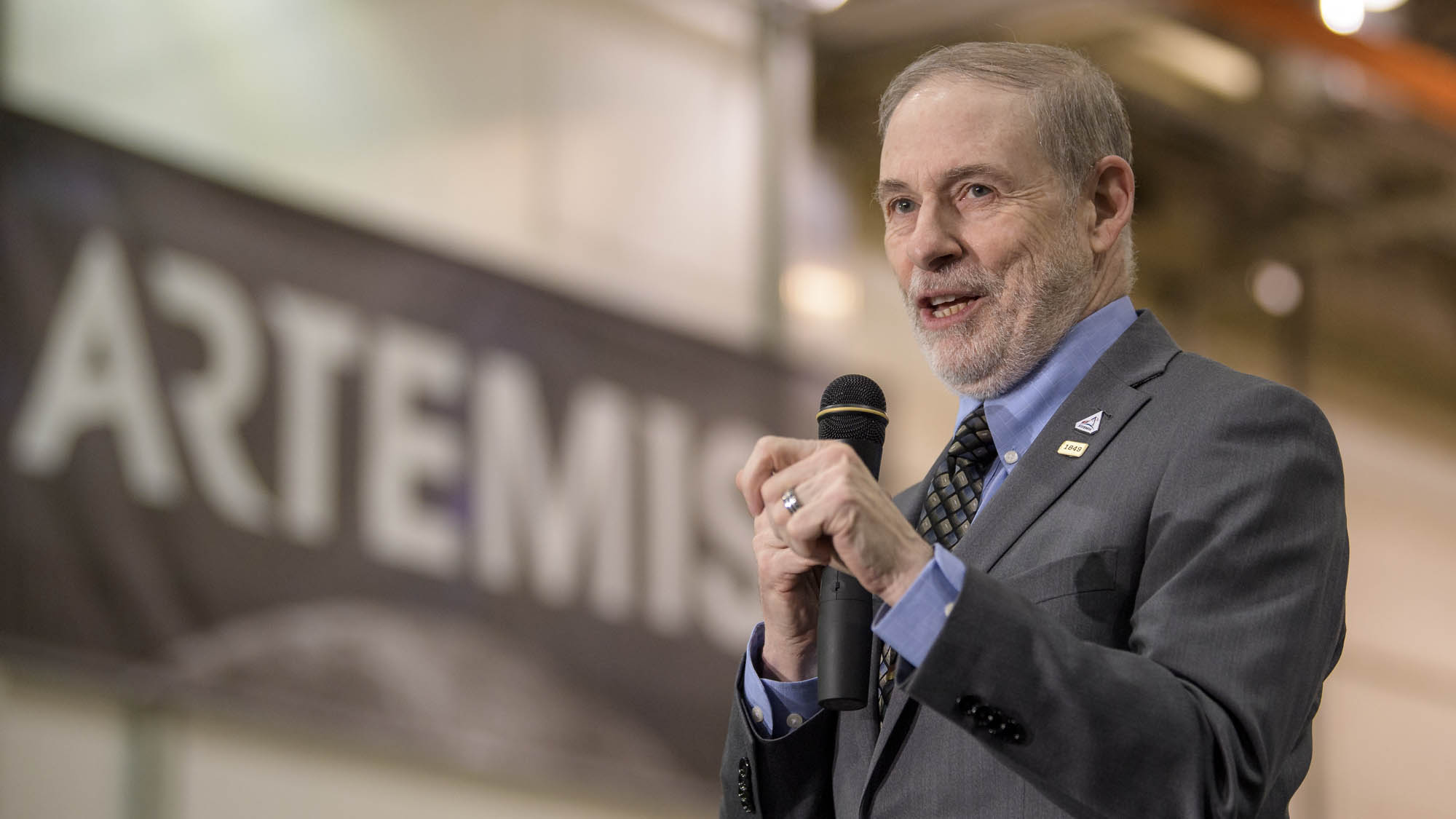
Doug Loverro, NASA's chief of human spaceflight, resigned from his post Monday (May 18) after less than a year on the job, the agency announced today (May 19).
Loverro's resignation as Associate Administrator for NASA's Human Exploration and Operations (HEO) Mission Directorate is a stunning development, as the agency counts down to the first orbital crew launch from U.S. soil in nearly a decade, which will take place on May 27.
Loverro's former deputy, former NASA astronaut Ken Bowersox, has taken over HEO in an acting capacity and will therefore oversee Demo-2, the first crewed mission of SpaceX's Crew Dragon capsule. Demo-2, which will send NASA astronauts Bob Behnken and Doug Hurley to the International Space Station (ISS), is scheduled to lift off atop a SpaceX Falcon 9 rocket from Kennedy Space Center in Florida next week.
Related: SpaceX's historic Demo-2 mission explained in 13 steps
No crewed mission has launched to orbit from the United States since NASA retired its space shuttle fleet in 2011. Since then, the space agency has relied completely on Russian Soyuz rockets and spacecraft to get its astronauts to and from the ISS.
The HEO leadership change comes just days ahead of a critical flight readiness review for Demo-2, which Loverro would have overseen. NASA Associate Administrator Steve Jurczyk will oversee that meeting in Loverro's place, agency officials told Space.com.
If all goes well with Demo-2, SpaceX will be clear to start flying operational missions to and from the orbiting lab for NASA. Elon Musk's company holds a $2.6 billion contract with the agency's Commercial Crew Program for six such operational flights.
Get the Space.com Newsletter
Breaking space news, the latest updates on rocket launches, skywatching events and more!
Loverro's departure continues a string of recent shakeups at the top of HEO.
The division's longtime leader, Bill Gersteinmaier, was reassigned in July 2019. Bowersox then took over as acting HEO chief until Loverro was announced as the successor in October.
The top HEO job obviously comes with high expectations and a lot of pressure, especially these days. NASA is working to land two astronauts near the moon's south pole in 2024, a tight timeline laid out by the administration of President Donald Trump just last year.
That tight timeline may have played a large role in Loverro's departure. While NASA did not give a reason for Loverro's resignation when announcing it today, sources told The Washington Post's Christian Davenport that the wheels were set in motion when Loverro broke a rule during NASA's procurement of human landing systems for the agency's Artemis lunar-exploration program.
"It had nothing to do with commercial crew," Loverro told Davenport, referring to the reason for his resignation. "It had to do with moving fast on Artemis, and I don’t want to characterize it in any more detail than that."
"Loverro hit the ground running this year and has made significant progress in his time at NASA. His leadership of HEO has moved us closer to accomplishing our goal of landing the first woman and the next man on the moon in 2024. Loverro has dedicated more than four decades of his life in service to our country, and we thank him for his service and contributions to the agency," NASA officials wrote today in an emailed statement about Loverro's departure.
"Next week will mark the beginning of a new era in human spaceflight with the launch of NASA astronauts Bob Behnken and Doug Hurley to the International Space Station," the statement added. "We have full confidence in the work Kathy Lueders and her entire Commercial Crew team have done to bring us here. This test flight will be a historic and momentous occasion that will see the return of human spaceflight to our country, and the incredible dedication by the men and women of NASA is what has made this mission possible."
- SpaceX's Demo-2 Crew Dragon flight with in photos
- SpaceX's Crew Dragon space capsule explained (infographic)
- NASA 'On Track' to Return Astronauts to the Moon by 2024, VP Pence Says
Editor's note: This story was updated at 12:40 a.m. EDT on May 20 to include information reported by The Washington Post.
Mike Wall is the author of "Out There" (Grand Central Publishing, 2018; illustrated by Karl Tate), a book about the search for alien life. Follow him on Twitter @michaeldwall. Follow us on Twitter @Spacedotcom or Facebook.
OFFER: Save 45% on 'All About Space' 'How it Works' and 'All About History'!
For a limited time, you can take out a digital subscription to any of our best-selling science magazines for just $2.38 per month, or 45% off the standard price for the first three months.
Join our Space Forums to keep talking space on the latest missions, night sky and more! And if you have a news tip, correction or comment, let us know at: community@space.com.

Michael Wall is a Senior Space Writer with Space.com and joined the team in 2010. He primarily covers exoplanets, spaceflight and military space, but has been known to dabble in the space art beat. His book about the search for alien life, "Out There," was published on Nov. 13, 2018. Before becoming a science writer, Michael worked as a herpetologist and wildlife biologist. He has a Ph.D. in evolutionary biology from the University of Sydney, Australia, a bachelor's degree from the University of Arizona, and a graduate certificate in science writing from the University of California, Santa Cruz. To find out what his latest project is, you can follow Michael on Twitter.










